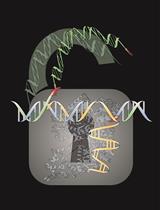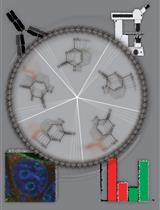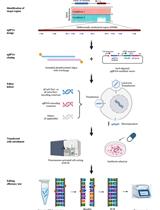- EN - English
- CN - 中文
Genotyping-free Selection of Double Allelic Gene Edited Medaka Using Two Different Fluorescent Proteins
使用两种不同的荧光蛋白进行双等位基因编辑青鳉的无基因分型选择
发布: 2017年12月20日第7卷第24期 DOI: 10.21769/BioProtoc.2665 浏览次数: 7307
评审: David CisnerosAnonymous reviewer(s)

相关实验方案

在哺乳动物细胞中通过具有 3' 突出端的长 dsDNA 介导的 CRISPR 敲入 (LOCK) 实现高效的大 DNA 片段敲入
Wenjie Han [...] Jianqiang Bao
2023年10月20日 1942 阅读
Abstract
This protocol describes a simple genotyping using two different colors of fluorescent protein genes inserted at the target locus. This method makes it possible to determine the genotype of each individual simply by observing the fluorescence later than F1 generation.
Keywords: Medaka (青鳉)Background
Because the conventional genotyping of genome edited animals largely depends on PCR-based genotyping, it is necessary to extract genomic DNA. In medaka, tail fin is an accessible and regenerable tissue, so that it is frequently used for genotyping to keep fish alive. To cut tail fin, fish must be fed for a few weeks to grow big enough (ca. 1 cm in body length). Feeding and taking care of many fishes are time-consuming and laborious. Therefore, reducing the number of fish to be fed in the early stage of breeding, such as embryos and early larvae, is desired to reduce the tasks. However, it is hard to take tail fin from embryos and early larvae alive because they are too small and fragile. To overcome this issue, a simple and non-invasive method for genotyping is essential. Therefore, we developed a new method that can non-invasively determine the genotype of each individual at embryonic stage simply by observing the fluorescence. We demonstrated the benefit of this method in a gene knock-in experiment targeting the growth associated protein 43 (gap43) gene expressed in the central nervous system (CNS) at 4 days post fertilization (dpf) (Murakami et al., 2017). This gene is suitable for the gene knock-in experiment, because its spatio-temporal expression pattern has been already revealed by RT-PCR and in situ hybridization in a previous study (Fujimori et al., 2008). If the expression pattern of a targeted gene in wild-type is unknown, it needs to be analyzed by RT-PCR, or any other technique, in order to confirm the correspondence between it and that of reporter gene in gene knock-in strains.
Materials and Reagents
- Plasmid pDR274 (Addgene, catalog number: 42250 )
- pBaitD-gap43-linker-EGFP (RIKEN DNA BANK, catalog number: RDB15409 )
- Ampliscribe T7-Flash Transcription Kit (Epicentre, catalog number: ASF3257 )
- RNeasy Plus Mini Kit (QIAGEN, catalog number: 74134 )
- PCR-Kit; KOD-Plus-Neo (TOYOBO, catalog number: KOD-401 )
- Sodium hydroxide (NaOH) (NACALAI TESQUE, catalog number: 31511-05 )
- Ethylenediaminetetraacetate acid (EDTA) (NACALAI TESQUE, catalog number: 14347-21 )
- Tris-HCl (pH 8.0) (NACALAI TESQUE, catalog number: 35435-11 )
- Alkaline lysis buffer (see Recipes)
- Neutralization buffer (see Recipes)
Equipment
- Forceps (DUMONT, model: 91-3869 or equivalents)
- PCR thermal cycler (NIPPON Genetics, catalog number: TC-96GHbC )
- Incubator (NKsystem, catalog number: LH-60FL3-DT )
- Fluorescent microscope (Leica, catalog number: Leica MZ8 )
Procedure
文章信息
版权信息
© 2017 The Authors; exclusive licensee Bio-protocol LLC.
如何引用
Murakami, Y., Ansai, S., Yonemura, A. and Kinoshita, M. (2017). Genotyping-free Selection of Double Allelic Gene Edited Medaka Using Two Different Fluorescent Proteins. Bio-protocol 7(24): e2665. DOI: 10.21769/BioProtoc.2665.
分类
分子生物学 > DNA > DNA 修饰
您对这篇实验方法有问题吗?
在此处发布您的问题,我们将邀请本文作者来回答。同时,我们会将您的问题发布到Bio-protocol Exchange,以便寻求社区成员的帮助。
提问指南
+ 问题描述
写下详细的问题描述,包括所有有助于他人回答您问题的信息(例如实验过程、条件和相关图像等)。
Share
Bluesky
X
Copy link











